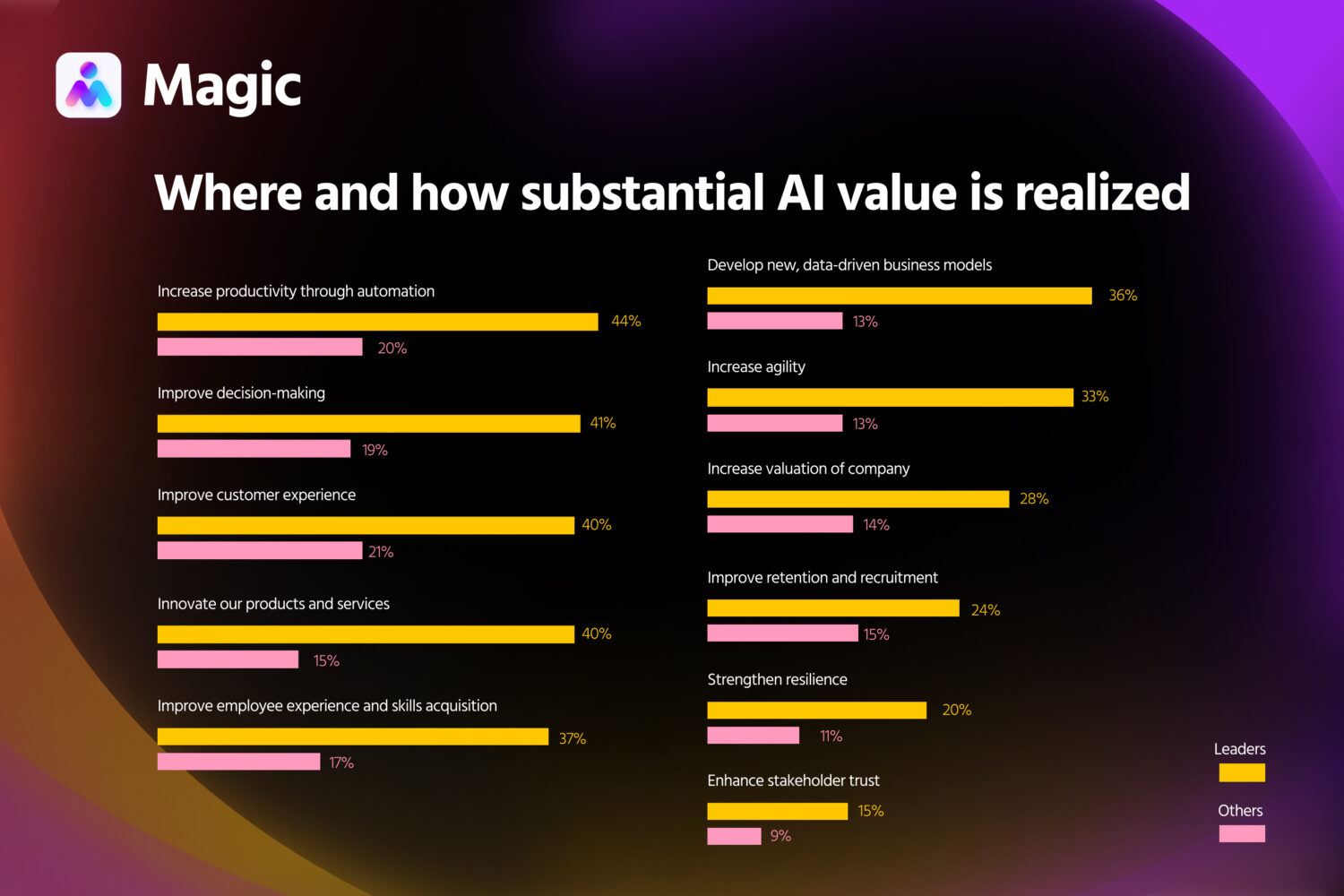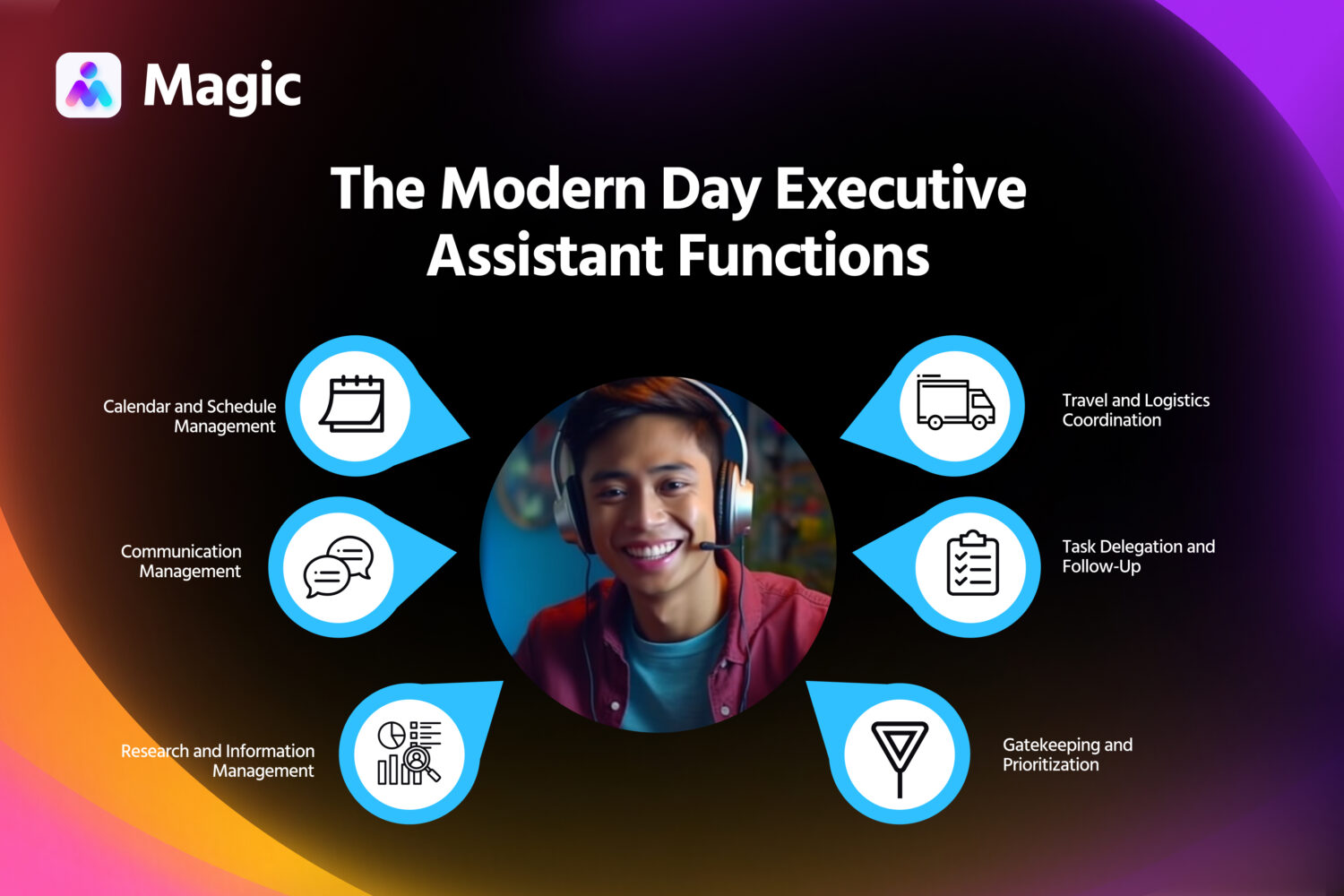Once, executive assistants were mainly seen as secretaries, receptionists, and stenographers. But the role of an executive assistant has always evolved to match how people get work done, and 2024 is no exception.
The executive assistant role is seemingly simple—helping busy executives organize their lives so they can get more work done—but the specifics have changed a lot over time. As technology increasingly streamlined such admin duties and clerical work, the duties of an EA expanded to networking, project management, and problem solving.
Going into 2024, businesses will face obstacles in hiring, unparalleled employee burnout, and tightened budgets amid economic downturns. In light of this, EAs will provide a viable, low-cost approach to managing worker capacity and improving organizational performance across the board.
- As technology has automated admin work, EAs have transitioned from clerical tasks to more strategic functions like scheduling, communication, data management, and problem solving.
- The future of executive assistants will be shaped by key trends, including using advanced tools, expanding into team management and decision support, and helping build healthier work cultures.
- As businesses face hiring, burnout, and budget issues, executive assistants’ skills in time management, communication, and problem solving can cost-effectively help manage worker capacity and boost organizational performance.
The Evolution of the Executive Assistant Role
The image of the executive assistant gained prominence in the latter 20th century, though it wasn’t always called that. The administrative and executive assistants of today might have been called secretaries in the ‘60s—a change prompted by societal norms, as well as a shift in their duties.
In the past, executive and administrative assistants focused on clerical tasks that allowed leaders and specialists to do their jobs more efficiently. This primarily involved typing, stenography, sending documents, and organizing files. They also handled communication by phone, mail, and fax.
Over the years, advancing technology has moved communication to new media and has streamlined or taken over much of the clerical work assistants once did.
The role of an executive assistant has changed to focus on empowering teams and executives by other means. These tend to focus on handling data, managing teams and delegation, representing their boss or department, and problem solving.
They’ve also, in many cases, taken their jobs online. Virtual executive assistants can work remotely, using voice and video calls, along with email and instant messaging to communicate with others.
And just as EAs of the past would have managed the state of an office, virtual EAs ensure virtual workspaces—such as project management sites, bulletin boards, or kanbans—are always in order.
The New Duties of an EA
Executive assistant functions have gradually shifted away from those of a secretary or clerk toward those related to planning, management, communication, and problem solving.
While the role of an executive assistant is quite flexible, there are a few core responsibilities they tend to fulfill.
-
Scheduling and Calendar Management
The primary way most EAs support their clients is by managing their time. They optimize schedules and arrange appointments to ensure that every hour of the day is as productive as possible.
-
Communication and Representation
EAs often serve as the first point of contact for an executive. They screen calls and messages and may act as a representative in calls, meetings, or other minor engagements.
-
Personal Assistance
It’s not unusual for an assistant to handle small personal errands, such as making reservations, purchasing gifts, or arranging deliveries on behalf of an executive, keeping their time free for work.
-
Handling Information
Consistent with secretaries and admin assistants, EAs often manage files, archives, databases, and other important information—though much of this work is now done virtually.
Naturally, this means EAs are also trained to maintain data privacy and information security standards. Many EAs also analyze or compile data into reports to help clients process information more efficiently.

Customize Your Virtual Team Based on Your Needs
Evolving Expectations of Executive Assistants
These changes in the duties of an EA have led to corresponding changes in what employers expect of them. There’s less emphasis on words per minute and more on quick thinking, communication, and interpersonal skills.
That said, some qualities—like diligence, attentiveness, and adaptability—are as important now as they were in the past. Here are some of the skills that will set the best EAs apart in 2024.
-
Interpersonal Skills
EAs are often called upon to represent an officer to clients, counterparties, or other members of the company. Great assistants know how to leave a good impression and how to defuse tense or hostile situations.
-
Project Management
Delegating and tracking tasks has become a common responsibility for EAs. Assistants who are organized and systematic may perform better here.
However, those who train specifically for such roles—those who know how to convey the details of a task, how to contextualize it, and how to ensure everyone’s on schedule—will truly distinguish themselves.
-
Research and Media Literacy
Much of an EA’s work will require them to look for answers, options, or solutions online. Knowing how to scour for information, especially amid sweeping changes in how the internet is organized and navigated, will be vital for EAs who want to excel at their work. EAs will also need to know how to distinguish reliable information from drivel.
-
Information Security
Safekeeping company and client information has become a major priority for businesses, especially with the potential damage a data breach could cause. While EAs won’t need to be infosec experts, they should be aware of basic protocols for keeping data safe. This includes both online and offline practices.
4 Emerging Executive Assistant Trends in 2024
The way EAs provide support changes along with the ways people work. Going into 2024, analysts and commentators have identified a few major trends that are likely to leave an impact on working patterns at large.
Here’s how they’re poised to affect executive assistant functions going forward.
Working with People
Managers may find themselves in a bind this year, as top brass demand ever-higher results, even as they’re still acclimating to managing flexible work setups.
Flexibility will be a crucial factor in attracting talent, as employees are more stressed and burnt out than ever. In this milieu, EAs may provide valuable assistance in helping workers manage their time and fostering a healthier work culture.
While business leaders will still need to come up with plans for better working conditions, EAs can help implement better schedules, mental health programs, and improved communication (to minimize friction within the workplace). Since EAs already often serve as a first point of contact, they’re well-positioned to fulfill this role.

Focus on Strategic Partnerships and Decision Support
Assistants with industry knowledge and experience will increasingly serve as aides to decision-making.
Executive assistant roles will likely emphasize the work of technical assistance. It could be executive assistants interpreting, collating, and synthesizing data to help leaders reach fully informed decisions.
EAs with expertise may also be charged with decision-making when their officers are busy—making them truly right-hands to their executives.
Increased Use Of Advanced Technology And Tools
Advancing technology, especially in fields like artificial intelligence, data science, and the internet of things, will have broad effects on how people spend their time and how they go about their work.
At the same time, as work tends toward a more hybrid approach, virtual spaces will become more enmeshed in collaborative work. EAs will likely be called upon to support executives in utilizing these tools.
In addition to running these tools themselves, they may also be charged with teaching their use to new employees or experimenting with alternatives. Assistants will likely serve as early adopters within the company, training and explaining new tech to other users.

Expanded Executive Assistant Functions
As office suite software and AI language models improve, EAs will likely spend less time on correspondence, writing reports, and similar tasks. Their time will likely be spent further on tasks where personal presence remains important.
For example, liaising with clients or coworkers and short-term problem solving that automated tools aren’t equipped to handle. Managing teams and clients will also be a crucial part of the executive assistant role.

When working with VAs, the key in proper delegation. This easy-to-use guide will help you choose what to delegate to your VAs.
Learn MoreEmbrace the Future of Executive Assistant Work
An executive assistant just might be what you need to hit the ground running in 2024. EAs are a great way to improve your business leadership. Better yet, filling in the executive assistant role offers flexibility in both costs and setup.
Planning on adopting new technology, improving company culture, or simply ensuring the team’s time is better spent? If any of your major plans for the next year, a virtual executive or administrative assistant will doubtless be a big help!
Magic can get you the assistant you need. Our virtual assistants are all carefully screened and trained to ensure you only work with the best. Tell us what roles you need them to fill, and we’ll find the ideal assistant for you. Book a call today!







